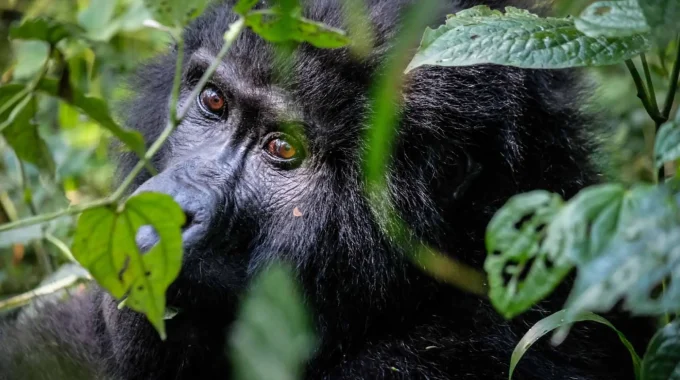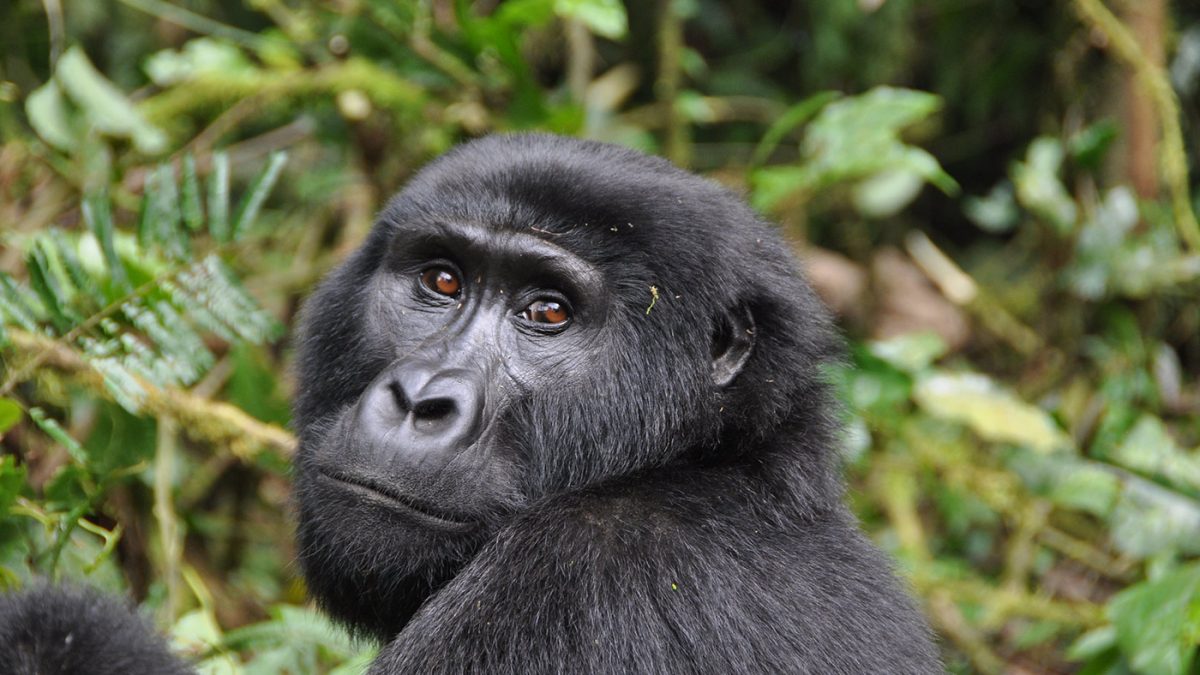
Is Gorilla Trekking in Uganda Safe?
Is Gorilla Trekking in Uganda Safe?
Absolutely, gorilla trekking in Uganda is safe. With more than 95% of DNA composition identical to humans, mountain gorillas are powerful and intelligent primates. For many years, these gentle giants have fascinated humans and seeing them up-close is one of the greatest wildlife experience in the wild.
Mountain gorillas live in groups/families also known as troops numbering up to 30, under a leadership of a dominant silverback, these individuals are huge in size but they rarely display their enormous strength and only ever become aggressive with other silverbacks.
Venturing the gorilla territory has raised a question of safety “whether tracking gorillas in Uganda is totally safe?
The movie King Kong, the original movie from the 1930s and the early 21st Century displays the gentle side of this beast as well as aggression when he felt threatened. While visiting the gorillas, it is important for the atmosphere to be calm so that the gorillas don’t feel threatened or need to protect their young from strangers.
With less than 1,000 mountain gorillas in the world, they cannot survive in zoos and the ones that you see in the zoo are lowland gorillas from West Africa.
As male gorillas grow into adult hood, they leave the troop to begin their own troop with some of the females often going with him. This happens around the age of 15 with life expectancy between 40 and 50 years. At the age of 15, they are known as Silverbacks as their hair turn silver with age.
The female gorillas can give birth at the age of 10 and will tend to their young for 4-6 years so will have perhaps four youngsters in their lifetime. Also, these creatures have a routine of rising from their leafy beds early each day and spending up to five hours a day eating. They take naps at midday and are generally a sleep for the night after sunset by which time all tourists are long gone.
Because gorillas are closely related to humans, they are susceptible to several diseases that humans catch such as cold and flu, so to avoid spreading any illness to these endangered primate species. As a result, they are constantly monitored by physicians who can easily identify them from one another because as they have unique nose prints and fingerprints.

Gorilla Habitat
Half of the world’s gorilla population lives in Uganda’s two national parks; Mgahinga Gorilla National Park and Bwindi Impenetrable Forest National Park.
Located in South western Uganda, Mgahinga Gorilla National Park is the smallest park in the country covering just 34 square kilometers, the park is part of the dense forested Virunga Mountains with the altitude varying from 2,200 meters to over 4,000 meters.
Bwindi Impenetrable National Park also found in the Southwestern Uganda on the border with the Democratic Republic of Congo, it covers approximately 320 square kilometers. This UNESCO World Heritage Site is home to over half of the world’s mountain gorilla population. The general altitude of Bwindi is lower than Mgahinga, ranging from 1,100 meters to 2,600 meters.
Gorilla Tourism
Gorilla families in Uganda open for gorilla trekking has become habituated to visits from tourists. The gorilla habituation process can take a couple of years, about 2-3 years. And that is done by the visit of just rangers and tourism through which gorillas are trained to get comfortable. The result is that tourists who follow simple instructions from their guides are perfectly safe.
As a precaution, rangers and tourism police are armed but chances of any need to use their weapons against gorilla families are slim to none.
Wildlife tourism in Africa is a lucrative business but in the plains of East Africa, tourists are confined to vehicle. However in order to see gorillas in Uganda, their remote habitat can only be reached on foot, hence groups of trekkers must trek in search of their close relatives.
Always guides and trackers know the general area to find a gorilla troop, but gorillas are nomadic traveling most days in search of food.
Security is very paramount as gorillas are very valuable to human life and the revenue generated by gorilla trekking to the Ugandan economy. That security is the role of both wildlife rangers and tourism police whose role includes guarding against more than gorillas with incursions of rebel groups into Uganda from over the border of Congo, something that has occurred in the past, however no it is under control.
Everyone on a gorilla trekking needs to be suitably attired in comfortable footwear, light raincoats in their carry bags as well as water and headgear. The number of tourists allowed to visit mountain gorilla troops is limited.
In conclusion: There is an element of adventure in every contact with a wild animal however the gorilla troops that treks visit are all habituated, make no mistake. Gorillas are wild animals with moods, just as people have. They make few sounds other than grunts and a sign that a silverback is unhappy with the situation is an impressive beating of the chest, a rare photo opportunity. However, it is not something that guides of a tourist party will ever want to see because it is a sign of warming.
Also it is important to note that everyone going on gorilla trekking should remember the simple rules that guides explain before they sent off and follow these rules religiously. When you encounter the gorillas, it is possible to get close to the troop, even to a female with a younger but it is important to stop when advised and keep quiet at all times so you don’t startle the troop.
Gorilla trekking rules and regulations are common sense and if followed religiously, it makes gorilla trekking in Uganda perfectly safe and experience that tourists remember forever.
